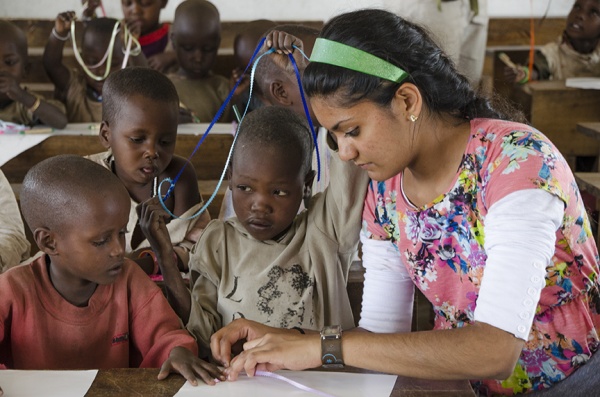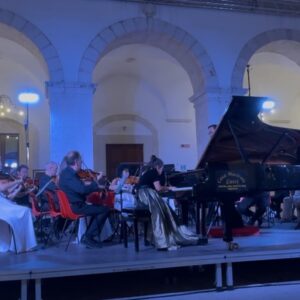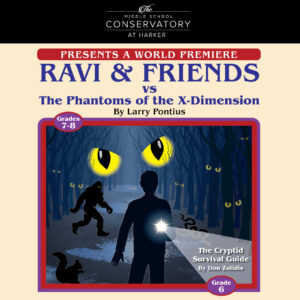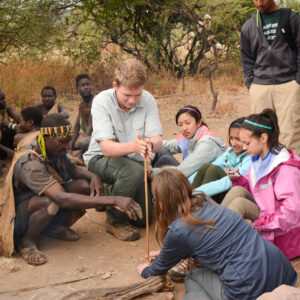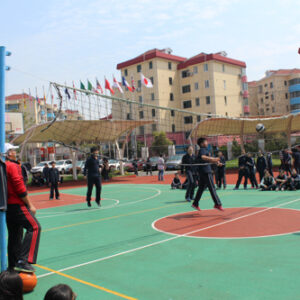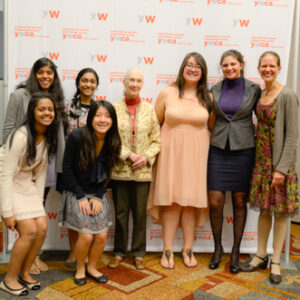This past summer 11 biology students, three journalism students and four chaperones made Harker history by embarking on an educational first for the school: a trip to Tanzania. Armed with a “world as their classroom” mentality, the group set off for the 10-day groundbreaking trip, called “One Health in Tanzania,” on July 24.
The Tanzanian adventure was the brainchild of upper school science department chair Anita Chetty, who had spent years planning and researching the trip. Head of School Chris Nikoloff joined Chetty in supervising the group of students.
Also serving as chaperones were Dr. Murali Daran and Dr. Alexandra Kamins. Daran (Lea, grade 12; Rohan, grade 10) is a cardiologist and has done extensive medical charitable work in places like the Dominican Republic. Besides serving as the group’s “doctor-on-call,” he inspired the students with a talk on his charitable work. Kamins is a recent graduate from the University of Cambridge whose doctoral work was in Ghana. She has also been on several study programs in Africa; her experiences provided essential support when collaborating on the curriculum with Chetty.
“I designed the trip as though it were a short, college-level type course,” said Chetty, explaining that the trip, while filled with great sights, was not primarily about sightseeing. “The focus was on the educational curriculum … and I was so impressed at how the students rose to that challenge.”
In fact, every aspect of the trip was infused with an opportunity for learning, from game-drives filled with biology lessons to visiting reserves and meeting with health professionals. One highlight was learning firsthand about the current AIDS epidemic in Tanzania. The situation became real to students as they met with health professionals, including a gynecologist and nurse at an AIDS clinic.
Another trip highlight was visiting with the Maasai tribe, when the students had the opportunity to personally donate toys to a local village school. It was an eye-opening experience for journalism student Jonathan Dai, grade 10.
“The tribe treated us like family and welcomed us into their homes and daily lives. We played games with their kids, herded goats and cattle, and even played a soccer game against the adult male tribe members,” he recalled.
While visiting with the Maasai, students set up an eye clinic, testing tribe members’ eyes and handing out prescription eye glasses they had brought over with them for that purpose.
“One of the most influential moments for me was visiting the Maasai. On a walk to and from the lake they tried to teach us some of their native language. For example, they taught us how to count and some basic phrases. Regardless of the fact that neither of us spoke the others’ languages we managed to communicate and bonded really quickly, which was an amazing experience,” recalled Alyssa Amick, grade 11.
Namrata Vakkalagadda, grade 12, said that a very personal memory for her was learning beading from a village tribe healer. “Even though we had an obvious language barrier, the connection between us was almost immediate. She welcomed my curiosity with open arms and continued to patiently guide my hands and hand me beads, until I created a bracelet which I was able to keep for myself. This memento of mine I think might be one that is dearest to me, because I created it with a member of the Maasai community and it was a connection that was personal between the two of us.”
The Tanzania trip was such a success that plans are already in the works for another one next summer. In addition to giving the gift of sight by providing eyeglasses, Chetty is also collecting money to buy and bring desperately needed textbooks to the Tanzanian public schools.
“There is nothing like learning that is directly experienced, whether educational or philanthropic,” said Chetty.
